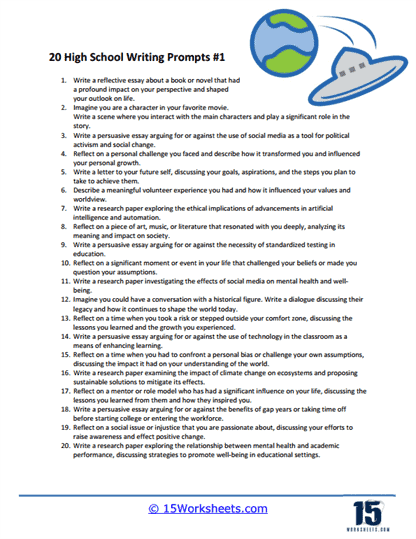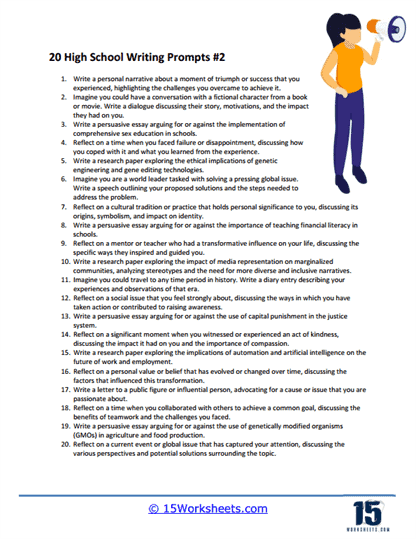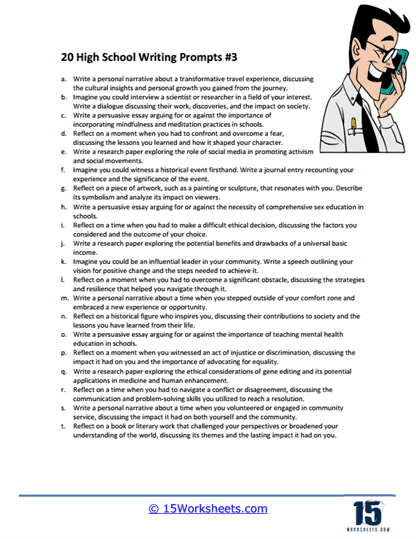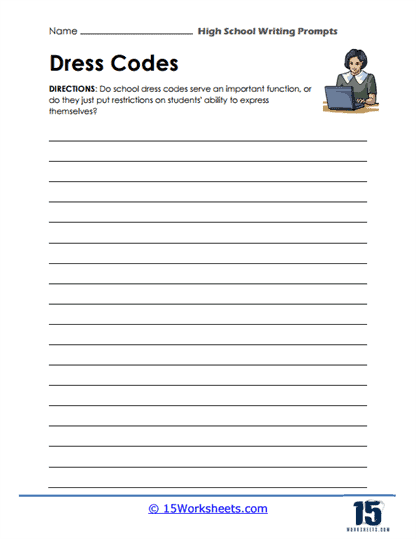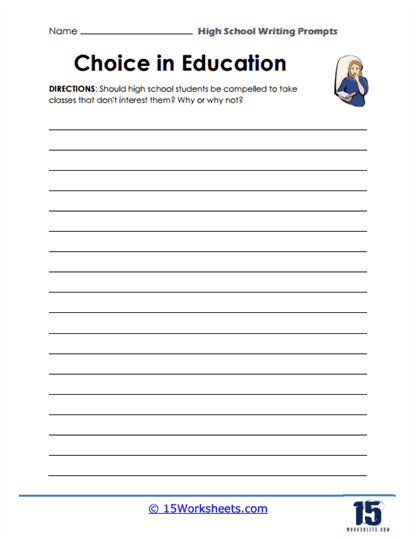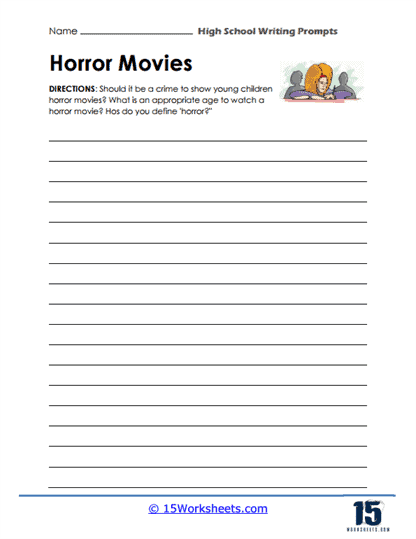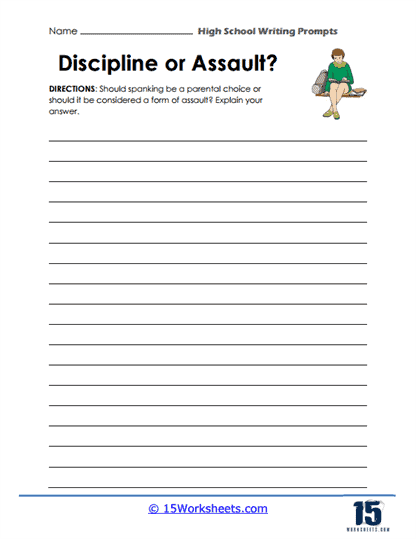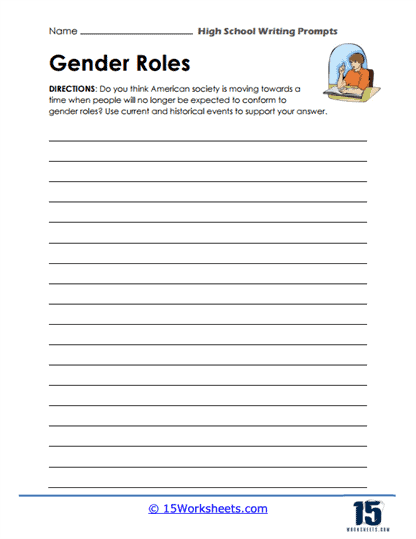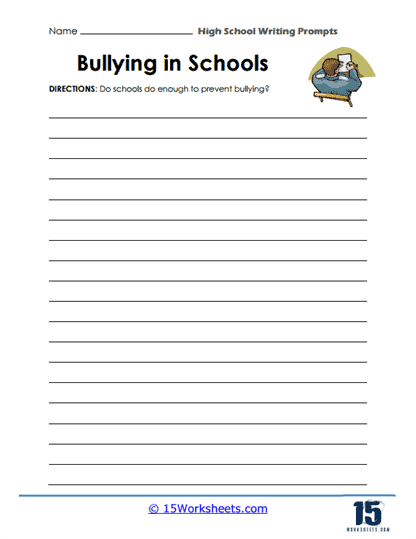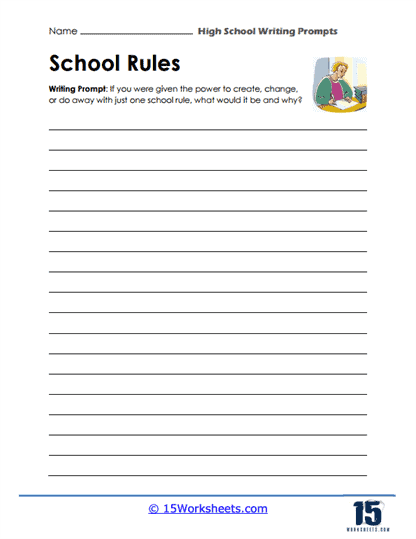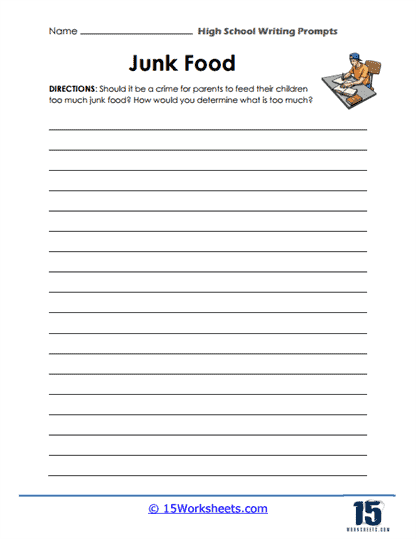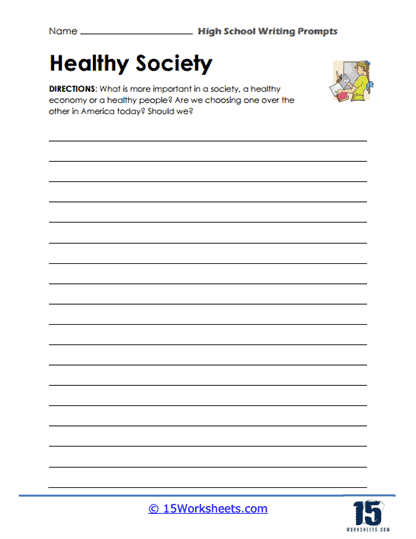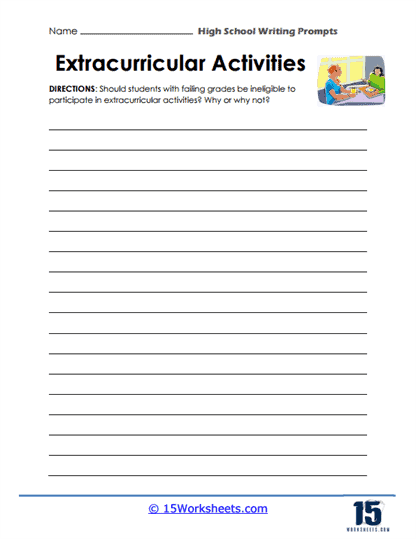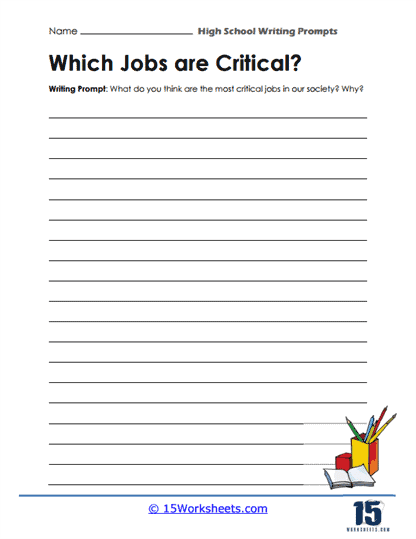High School Worksheets
All About These 15 Worksheets
These worksheets contain prompts or questions designed to stimulate a student’s thinking and encourage them to write.
These writing prompts are be structured in various ways, depending on the learning objectives. They could ask students to write a persuasive essay, an argumentative piece, a narrative, a descriptive essay, or even a piece of creative writing. Some are also themed around historical events, literature, social issues, personal experiences, and more. For instance, a writing prompt for an English class might ask a student to analyze a character’s motivations in a specific book. In a history class, a prompt might ask a student to compare and contrast different perspectives on a historical event. In a science class, students might be asked to explain a scientific concept in their own words.
For the majority of the worksheets each writing prompt worksheet contains the prompt itself, followed by a series of lines or blank spaces where students can write their response. Some worksheets may also include additional sections with tips for structuring the response, a checklist for self-assessment, or other helpful resources.
The main purpose of these worksheets is to provide students with guided practice in writing, helping them to develop their critical thinking, creativity, and communication skills. They also help teachers assess the student’s understanding of a topic, their ability to form and articulate their own thoughts, and their proficiency in writing conventions like grammar, punctuation, and spelling.
How to Respond to Writing Prompts
Responding to a writing prompt as a high school student involves a series of careful steps. First and foremost, you need to read and understand the prompt, identifying keywords or phrases that guide the focus of your response. You need to be able to pick out words like “compare”, “contrast”, “discuss”, “explain”, “define”, “analyze”, or “argue” to determine what exactly the question is asking of you. Once you understand the prompt, the next step is defining the purpose of your essay. This could range from arguing a point, comparing and contrasting, or explaining a process, among others.
After understanding the prompt and defining the purpose, the brainstorming phase begins. Spend some time jotting down ideas, thoughts, arguments, or examples that are relevant to the prompt. This process is key to developing your main argument or points. With these ideas in mind, start crafting an outline for your essay. This should typically consist of an introduction (which includes a clear thesis statement), body paragraphs, and a conclusion. The introduction presents your main argument, each body paragraph explores a different point related to your thesis, and the conclusion summarizes your main points and revisits your thesis in light of the evidence you’ve presented.
Now it’s time to write the essay based on your outline. Aim for clear, concise language. Your paragraphs should each start with a topic sentence that ties back to your thesis, followed by evidence or examples that support this point, and an explanation of how this evidence reinforces your thesis.
Finally, revising and proofreading is a crucial step. After writing your essay, you need to revise it for clarity and coherence, ensuring your grammar, spelling, and punctuation are correct. Check that each paragraph stays on one topic, and that your essay, as a whole, clearly supports your thesis. The process of effectively responding to a writing prompt involves understanding the prompt, articulating a clear response, and providing evidence to back up your argument. The more you practice, the better you will get at quickly understanding prompts and organizing your thoughts.
What Are the Six Parts of an Effective Writing Prompt?
An effective writing prompt usually consists of several elements that guide and support students in their writing process. Here are six parts that make a writing prompt more effective:
Audience – Who is the intended audience for this piece of writing? Identifying the audience helps the writer choose the appropriate tone, style, and content.
Purpose – Why is the student writing this piece? Are they trying to inform, persuade, describe, narrate, or explain? Defining the purpose helps the writer decide on the structure and type of information to include.
Topic – This is the subject matter that the student will be writing about. The topic should be clear, interesting, and appropriately challenging for the student’s level.
Format – The format refers to the type of writing the student is asked to produce. This could be an essay, a letter, a story, a report, a poem, or any other form of written expression.
Support – The prompt should provide some level of guidance or support to the student. This could be in the form of brainstorming ideas, a suggested structure for the response, or key points to consider.
Criteria for Success – The prompt should ideally include an indication of what a successful response will look like. This could include a rubric, a checklist, or examples of successful responses. This helps the student understand what is expected and how their work will be evaluated.

